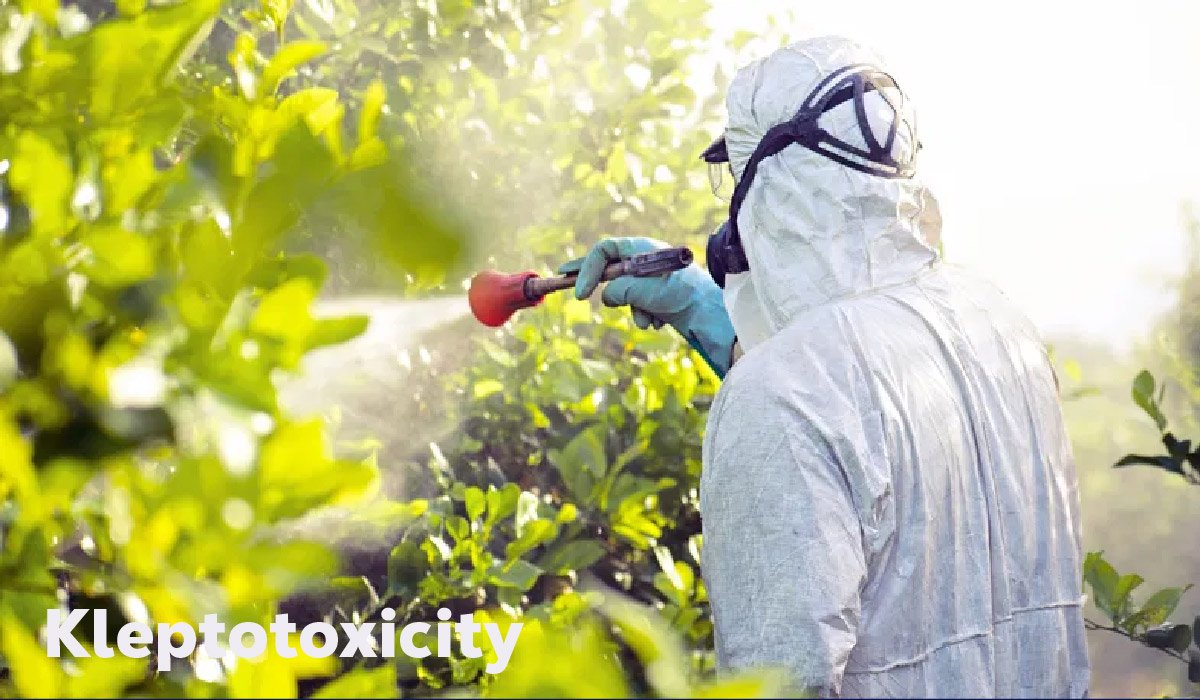Blog
Kleptotoxicity: The Hidden Threat You Must Understand

Introduction
Kleptotoxicity might sound like a word made up for a futuristic novel, but it represents a very real and growing concern in both nature and human society. Imagine a toxin so clever that it doesn’t just harm a living being but also steals the nutrients essential for life. Or consider an idea so powerful that, when stolen, it triggers a ripple effect of emotional, intellectual, and even economic damage. This is the hidden world of kleptotoxicity — a dual-edged phenomenon affecting ecosystems, public health, organizational integrity, and even creative culture.
The term merges the concept of “klepto” (theft) with “toxicity” (harm), revealing a fascinating interplay between theft and poisoning, whether by chemicals in nature or by unethical behavior in digital, academic, or corporate settings. As we explore kleptotoxicity in depth, this article will guide you through the biological mechanisms, environmental sources, social consequences, and digital realities of this emerging concept, revealing why it’s one of the most important yet under-discussed issues of our time.
What Is Kleptotoxicity? A Core Definition
Scientific Meaning (Biological/Ecological)
In the scientific world, kleptotoxicity refers to the subtle and dangerous process where toxic substances interfere with, steal, or mimic essential nutrients in living organisms. It is most commonly associated with heavy metals, chemical pollutants, and harmful algal toxins that disrupt natural nutrient cycles. For example, mercury can mimic or block iodine, which is critical for thyroid function in both fish and humans. Lead can substitute for calcium in bone structures, leading to weakened growth or development.
These toxins don’t just poison directly; they act like biochemical thieves — infiltrating biological systems, replacing essential elements, and slowly dismantling internal health from the inside out. Bioaccumulation and biomagnification are key concepts here: toxins gather in the tissues of small organisms and then magnify as they move up the food chain, eventually affecting apex predators like birds of prey or humans who consume contaminated food. Kleptotoxicity reveals how toxins can exploit biology’s most vulnerable pathways to cause long-term, often invisible, harm.
Societal Meaning (Behavioral/Ethical)
Outside of biology, kleptotoxicity has taken on a powerful metaphorical meaning in sociology, psychology, and digital ethics. It refers to the toxic consequences of theft in human systems — such as plagiarism in schools, idea theft in corporate environments, or the appropriation of cultural knowledge online. When someone steals intellectual property, it creates damage far beyond the stolen object.
The victim may suffer creative burnout, a decline in self-esteem, and a loss of economic opportunity, while the thief may eventually face reputational damage and legal consequences. In organizations, kleptotoxicity can lead to a loss of trust, innovation stagnation, and toxic work cultures where unethical shortcuts are normalized. This version of kleptotoxicity shows that the act of stealing — even when subtle or socially accepted — can release toxic emotional, professional, and social consequences that accumulate over time, just like pollutants in nature.
Comparison Table: Kleptotoxicity vs. Toxicity vs. Kleptomania
| Term | Definition | Context |
|---|---|---|
| Kleptotoxicity | Harm caused by the theft of resources (biological or intellectual) | Ecology, Sociology, Ethics |
| Toxicity | Direct harm caused by a substance or behavior | Chemistry, Health |
| Kleptomania | A psychological disorder involving compulsive stealing | Mental Health |
How Kleptotoxicity Works in Nature
Bioaccumulation and Nutrient Displacement
Toxins that cause kleptotoxicity don’t need to kill immediately to be dangerous. Many operate slowly by mimicking or displacing vital nutrients in an organism’s system. For instance, mercury interferes with iodine, disrupting thyroid hormone production. Lead interferes with calcium, weakening bone development and neural functions. These heavy metals, once absorbed into the body, are often stored in fat or bone tissues where they remain for years — if not a lifetime. This process, called bioaccumulation, allows these substances to build up and reach toxic levels over time. The scary part is that the organisms might not show symptoms until significant damage has occurred, making prevention and early detection critical.
Food Chain Transfer and Biomagnification
As these toxins accumulate in small organisms, they don’t stay there. Instead, predators higher in the food chain consume these contaminated prey, and the toxins are passed upward in greater concentrations — a process called biomagnification. For example, a small fish may ingest trace amounts of mercury from polluted water, but when a larger fish eats hundreds of these smaller fish, its mercury levels multiply. When humans consume these large predatory fish, the cycle continues. This kleptotoxicity doesn’t just affect individual organisms; it reshapes entire food webs, causes reproductive failure in wildlife, and creates health risks for human populations reliant on seafood or other contaminated resources.
Environmental Sources of Kleptotoxicity
Common Pollutants
Heavy metals like lead, mercury, cadmium, and arsenic are among the most frequent agents of kleptotoxicity. These pollutants enter ecosystems through industrial discharge, mining operations, pesticide use, and improper waste disposal. Pesticides such as organophosphates further exacerbate the issue by interfering with neurological and metabolic functions in non-target organisms, often destroying essential micronutrient pathways.
Biological Sources
Not all kleptotoxins come from human activity. Natural sources such as harmful algal blooms can produce microcystins, which severely damage liver cells and block nutrient absorption. Similarly, some parasitic fungi release toxins that impair root nutrient uptake in plants, reducing crop productivity and altering soil microbial life. These natural kleptotoxic events often increase in frequency and intensity due to human-induced environmental changes.
Climate Change & Human Activity
As the planet warms, kleptotoxicity is likely to worsen. Ocean acidification, rising temperatures, and disrupted rainfall patterns increase the frequency of algal blooms and toxin-producing fungi. Deforestation, urbanization, and excessive chemical use intensify the presence of kleptotoxic pollutants in air, water, and soil. The result is a dangerous feedback loop: environmental stress increases kleptotoxic exposure, and kleptotoxicity weakens the organisms and ecosystems needed to buffer environmental stress.
Examples of Kleptotoxicity in Nature
Animal Cases
Nature is full of examples of organisms stealing from one another in ways that disrupt ecosystems. Seabirds such as frigatebirds and skuas are known for their kleptoparasitic behavior, stealing fish from other birds like pelicans and gulls. While it may help the thief survive, this behavior puts pressure on the entire food web, especially during times of scarcity. Mollusks such as mussels often absorb phytoplankton rich in neurotoxins and pass these on to predators like sea otters, causing neurological damage and death. Chimpanzees have also been observed raiding rival food sources, especially in resource-scarce regions, leading to violence and intergroup tension.
Microbial and Algal Impact
Microorganisms also play a role in kleptotoxicity. Cyanobacteria release toxins that harm liver function in aquatic species, reducing reproductive success and lifespan. Meanwhile, toxic fungi can suppress root function in agricultural systems, reducing nutrient uptake in crops and leading to food insecurity. These microbial actors can transform ecosystems by altering competition, weakening host species, and making systems more vulnerable to collapse.
Human-Caused Kleptotoxicity: Social, Ethical, and Digital Forms
Intellectual Theft and Academic Burnout
In academic and digital spaces, kleptotoxicity takes the form of plagiarism, stolen research, and uncredited creative work. When original thinkers have their ideas stolen or misused, they often lose motivation to share further insights. This leads to burnout, reduced collaboration, and a toxic cycle where dishonesty is rewarded, and genuine contribution is ignored. It also fosters a culture of mistrust where creators hide their ideas instead of building on each other’s work.
Corporate Kleptotoxicity
In the business world, kleptotoxicity appears when companies exploit employees, absorb startup innovations without fair compensation, or engage in unethical competition. Employees whose work is undervalued or stolen may stop contributing or leave the organization altogether. The result is innovation stagnation, high turnover, and a workplace culture where silence is valued more than ideas.
Cultural and Digital Theft
Digital platforms have made it easier than ever to copy, paste, and profit from someone else’s work. This includes stolen artwork, AI-generated content based on unlicensed data, and cultural appropriation of indigenous traditions or designs without permission or context. Such theft dilutes authenticity, damages livelihoods, and erodes cultural heritage. Kleptotoxicity here is not just economic but deeply moral, affecting identity and dignity.
Psychological & Societal Effects of Kleptotoxicity
On Victims
Victims of kleptotoxicity — whether a fish deprived of nutrients or a creator robbed of credit — often suffer silently. The damage is slow but accumulative, leading to exhaustion, depression, anxiety, and creative shutdown. Financially, the consequences can be devastating, particularly for individuals who rely on their intellectual or cultural output to survive.
On Perpetrators
Interestingly, those who commit acts of kleptotoxicity aren’t immune to its effects. Over time, they may develop paranoia, fear of exposure, or even imposter syndrome. Some spend years hiding their theft or living in fear of being discovered, leading to chronic stress and moral disengagement.
On Society
At the societal level, kleptotoxicity erodes trust, discourages innovation, and fosters unethical behavior. Communities become divided, black markets flourish, and creativity is replaced by mimicry. The more theft is normalized, the more difficult it becomes to recognize and reward originality — creating a self-reinforcing cycle of decline.
Impacts on Ecosystems and Human Health
Ecosystem Disruption
Kleptotoxicity can drive species to extinction, disrupt reproduction, and alter migration or feeding behaviors. Apex predators that consume poisoned prey become ill or infertile, which in turn affects prey populations and vegetation. The collapse of even one species can ripple across entire ecosystems.
Human Health Issues
Humans face neurological issues from mercury exposure, hormonal disruption from BPA and phthalates, and cancer risk from persistent pollutants. These substances, often ingested indirectly through water, fish, or food packaging, cause kleptotoxic damage that unfolds over years.
💡 Toxin ➝ Affected Species ➝ Symptom ➝ Human Risk
| Toxin | Species Affected | Symptom | Human Risk |
|---|---|---|---|
| Mercury | Fish, Seabirds | Neural damage, infertility | Developmental delays |
| BPA | Mammals, Humans | Hormonal disruption | Infertility, cancer |
| Lead | Birds, Mammals | Bone loss, cognitive decline | IQ drop, anemia |
How Technology Amplifies Kleptotoxicity
Easy Access to Copy and Steal
The digital era has made it effortless to steal creative content, trade secrets, or cultural expressions. A few clicks can replicate years of research or artistry. Without proper protections, original creators are left vulnerable to exploitation, while digital thieves thrive unchecked.
AI & Automation Risks
Artificial intelligence, while a powerful tool, can become a kleptotoxic agent if trained on unlicensed content. Artists, authors, and musicians whose work is used without credit or compensation face economic losses and creative erasure. The lack of attribution perpetuates kleptotoxic systems where originality is undervalued.
Real-World Case Studies
Marine Ecosystem Collapse via Toxin Spread
In the Baltic Sea, mercury pollution led to dangerously high levels in cod and herring. This not only affected local fisheries but also poisoned seabirds and humans, leading to a health and economic crisis — a perfect example of kleptotoxicity through biomagnification.
Academic Ethics Failure
Universities around the world have dealt with plagiarism scandals where senior researchers stole work from students or peers. These scandals damage institutional trust, demotivate young scholars, and reduce the credibility of scientific findings.
Corporate Idea Theft
Many startups report that after pitching to large corporations, their ideas are quietly absorbed without credit or funding. This discourages entrepreneurial risk and allows large firms to dominate through unethical advantage — a clear form of corporate kleptotoxicity.
How to Prevent and Combat Kleptotoxicity
For Ecosystems
Combatting ecological kleptotoxicity involves stricter waste regulations, bioremediation strategies like planting toxin-absorbing crops, and conservation efforts to restore biodiversity. Healthy ecosystems are more resilient and less vulnerable to toxin takeover.
For Society
On the societal front, we need strong copyright enforcement, transparent workplace policies, and education systems that reward originality. Digital tools that detect plagiarism, protect IP, and trace AI-generated content must be part of the solution.
📊 Problem ➝ Solution ➝ Responsible Party ➝ Result
| Problem | Solution | Responsible Stakeholder | Expected Outcome |
|---|---|---|---|
| Idea Theft | IP Protection Tools | Universities, Employers | Fair recognition |
| Pollution | Bioremediation & Laws | Governments, Companies | Clean environments |
| Digital Piracy | Detection & Attribution | Platforms, Developers | Creator protection |
Future of Kleptotoxicity Research
Interdisciplinary Opportunities
The future of kleptotoxicity research lies in combining ecology, public health, behavioral psychology, AI ethics, and legal studies. Only an interdisciplinary lens can capture the full complexity of this phenomenon.
Needed Innovations
We need real-time toxin detection in water and soil, stronger plagiarism detection tools, and AI systems designed with built-in ethics. These innovations can help us move from reactive to proactive solutions, reducing the cumulative impact of kleptotoxicity.
Conclusion
Kleptotoxicity is more than just a scientific curiosity or a digital buzzword — it’s a deeply layered phenomenon affecting nature, health, innovation, ethics, and culture. Whether through toxic chemicals that steal essential nutrients or unethical actors who exploit ideas and resources, kleptotoxicity reveals a universal truth: stealing always leaves behind invisible damage. Both the stealer and the victim suffer in the long run, making the consequences not only toxic but systemic.
As society and science evolve, recognizing and confronting kleptotoxicity is no longer optional — it is essential for building a sustainable, fair, and ethical world. Through awareness, education, legal protections, and technological responsibility, we can begin to heal the hidden wounds of this toxic theft and ensure a future where originality and health are protected for all.
FAQs About Kleptotoxicity
What is kleptotoxicity in simple words?
Kleptotoxicity means the harmful effects caused when something is stolen—like nutrients in nature or ideas in society. In the environment, toxins steal essential nutrients from animals or plants. In human life, kleptotoxicity happens when someone takes credit for another person’s work or ideas, which causes emotional or social harm.
How does kleptotoxicity affect nature and animals?
Kleptotoxicity in nature harms animals by blocking their ability to absorb important nutrients. For example, toxins like mercury or lead can build up in fish and travel through the food chain. This causes health problems, slows growth, and even reduces the chance for animals to survive or reproduce.
Can kleptotoxicity happen in humans or society?
Yes, kleptotoxicity also happens in human life. When people steal ideas, copy content, or exploit others’ work without permission, it causes stress, burnout, and unfair treatment. This type of toxic behavior can harm trust in schools, offices, and creative communities.
What causes kleptotoxicity in the environment?
Environmental kleptotoxicity is often caused by pollution. Things like heavy metals, pesticides, and toxic algae release harmful substances into the water or soil. These toxins enter the food chain and block the normal use of vitamins and minerals in living things.
How can we prevent kleptotoxicity?
We can prevent kleptotoxicity by reducing pollution, protecting ecosystems, and promoting honesty and fairness. In nature, we use bioremediation and better waste control. In society, we protect intellectual property, give proper credit, and use tools to detect and stop plagiarism or content theft.
For More Information, Visit Coopermagazine
-

 Celebrity1 year ago
Celebrity1 year agoWho Is Jennifer Rauchet?: All You Need To Know About Pete Hegseth’s Wife
-

 Celebrity1 year ago
Celebrity1 year agoWho Is Mindy Jennings?: All You Need To Know About Ken Jennings Wife
-

 Celebrity1 year ago
Celebrity1 year agoWho Is Enrica Cenzatti?: The Untold Story of Andrea Bocelli’s Ex-Wife
-

 Celebrity1 year ago
Celebrity1 year agoWho Is Klarissa Munz: The Untold Story of Freddie Highmore’s Wife
















